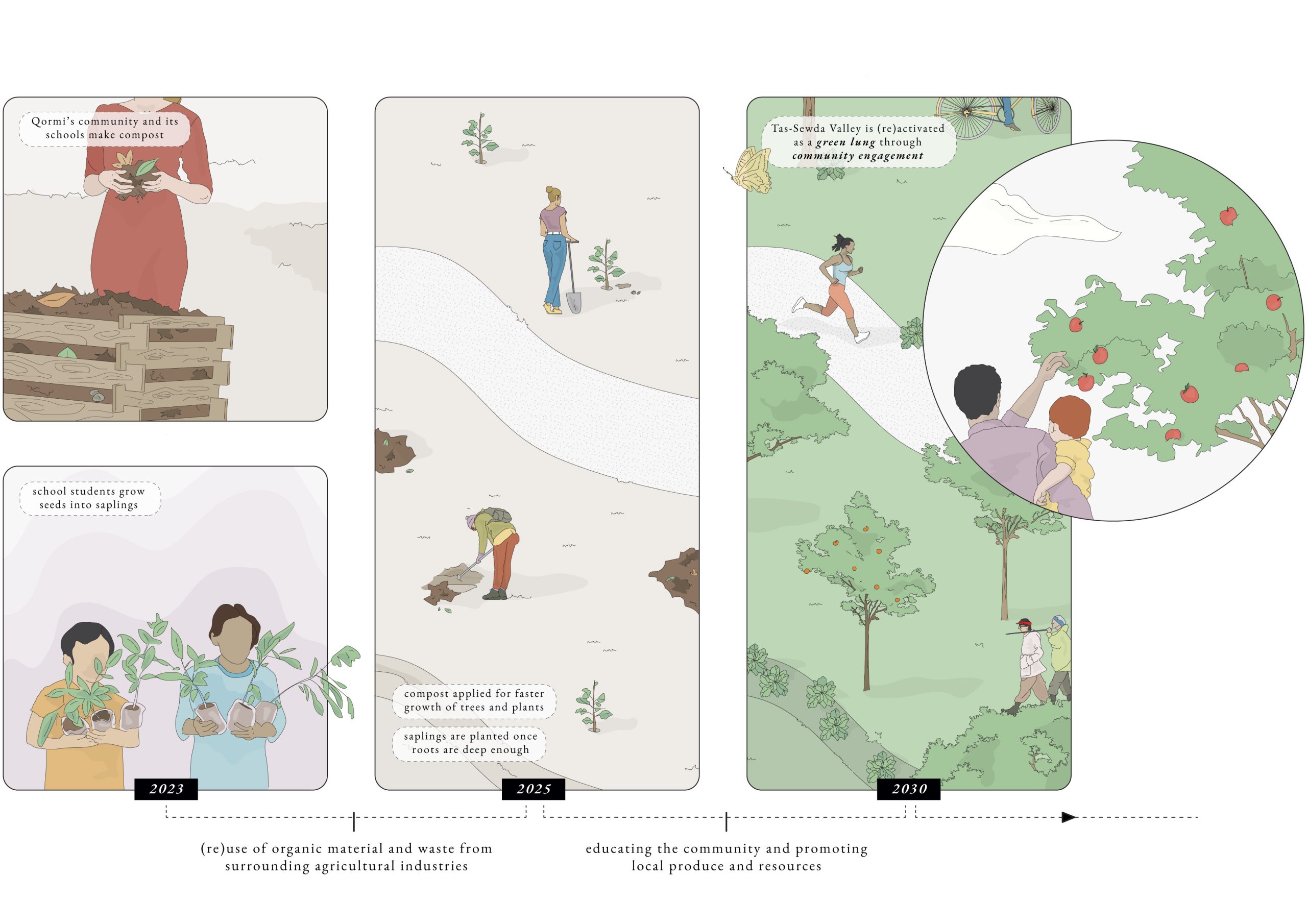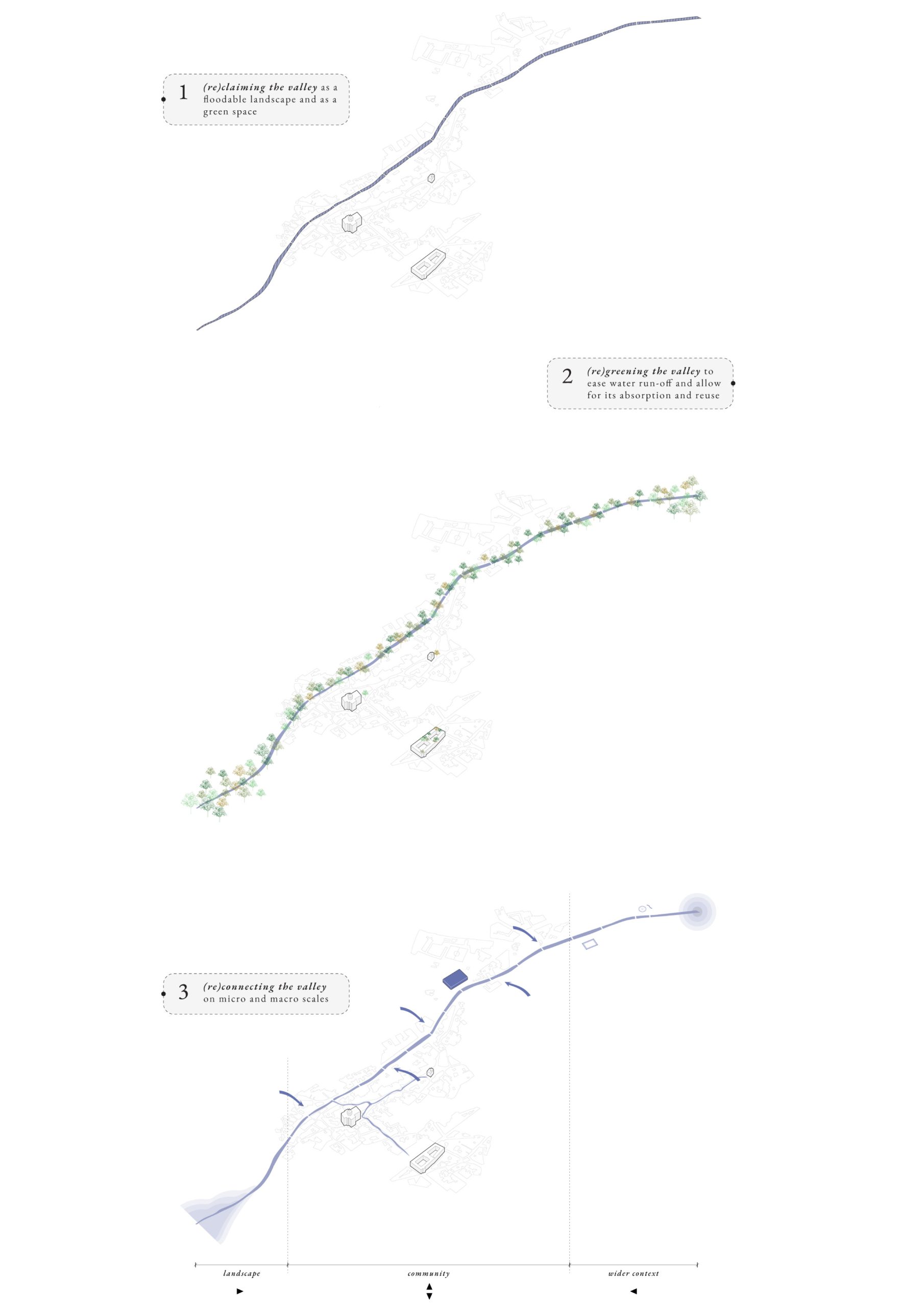Qormi Valley regeneration proposal
| Date | 2023 |
|---|---|
| Client | n.a. |
| Value | n.a. |
| Location | Qormi, Malta |
drawing heritage landscaping maltese heritage masterplanning regeneration rehabilitation sustainable heritage urban regeneration
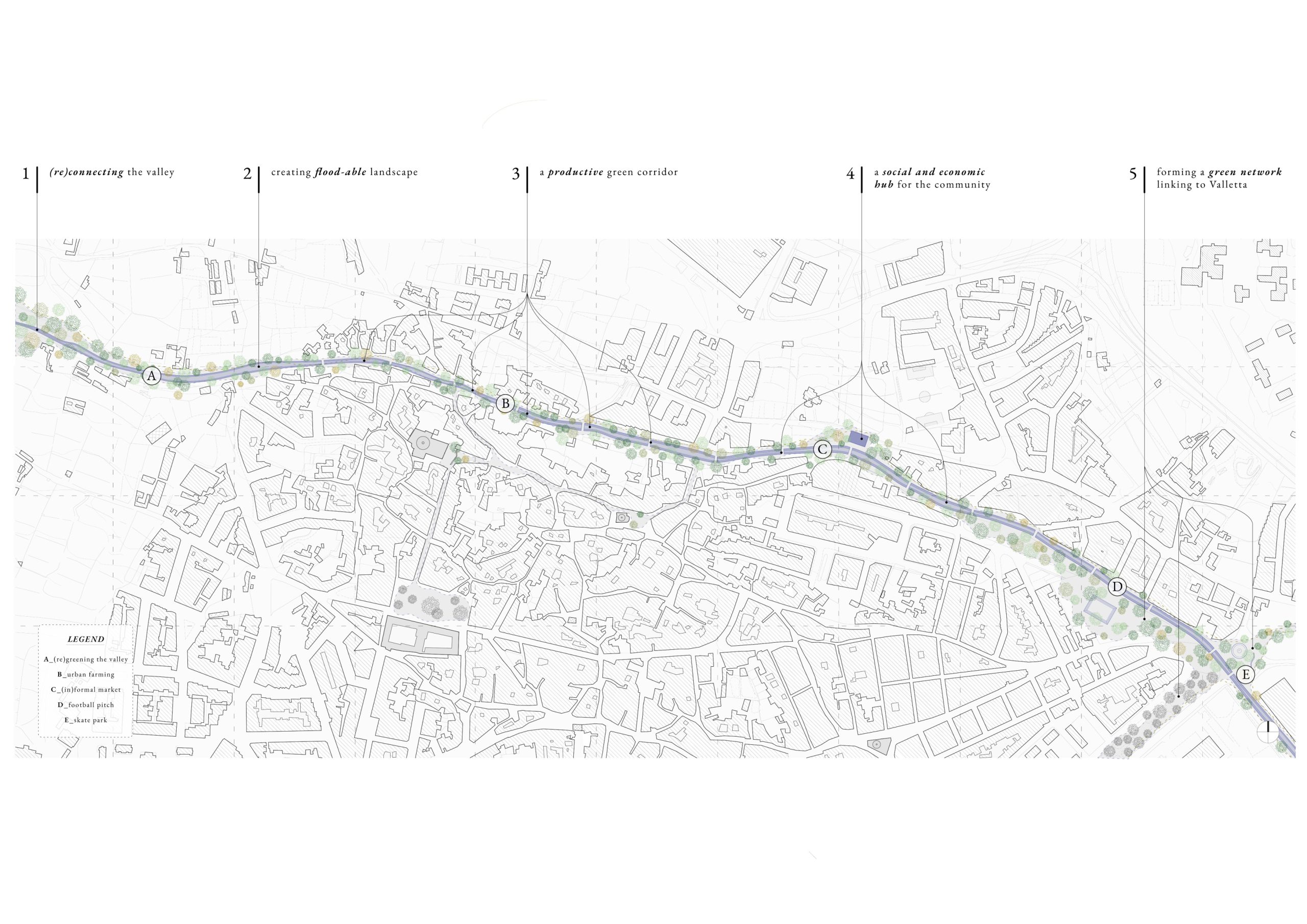
The proposal for the regeneration of
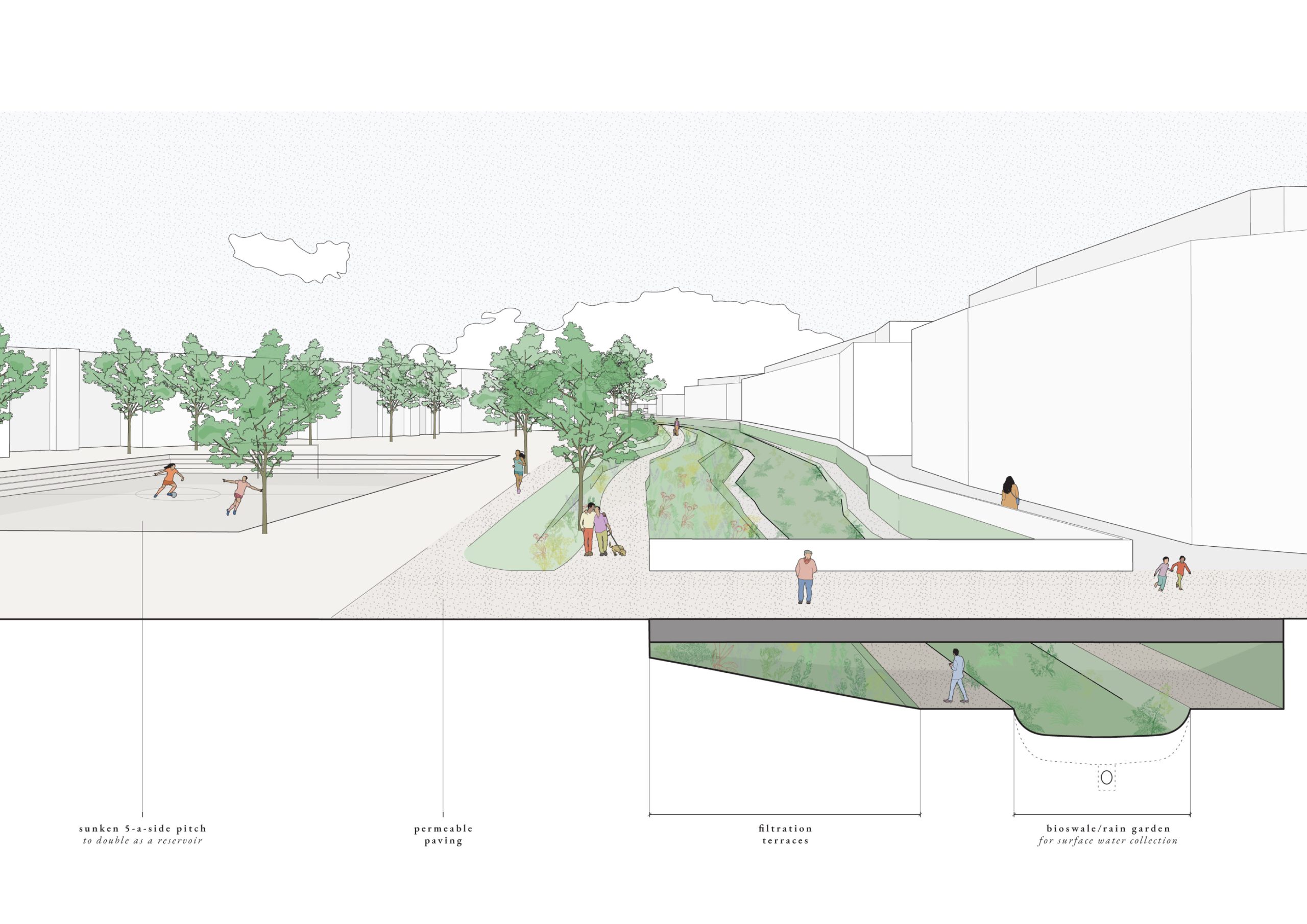
The masterplan regeneration proposal is developed around five key points:
- Reconnecting the entire valley to the historic centre of the town.
- Providing for a flood-able landscape and a new urban environment able to cater for floodings.
- Introducing a productive green corridor, crossing the whole valley and providing open public space and new areas dedicated to urban agriculture and education activities.
- Creating a new social and economic hub for the community.
- Forming a green network linking Qormi to Valletta once again.
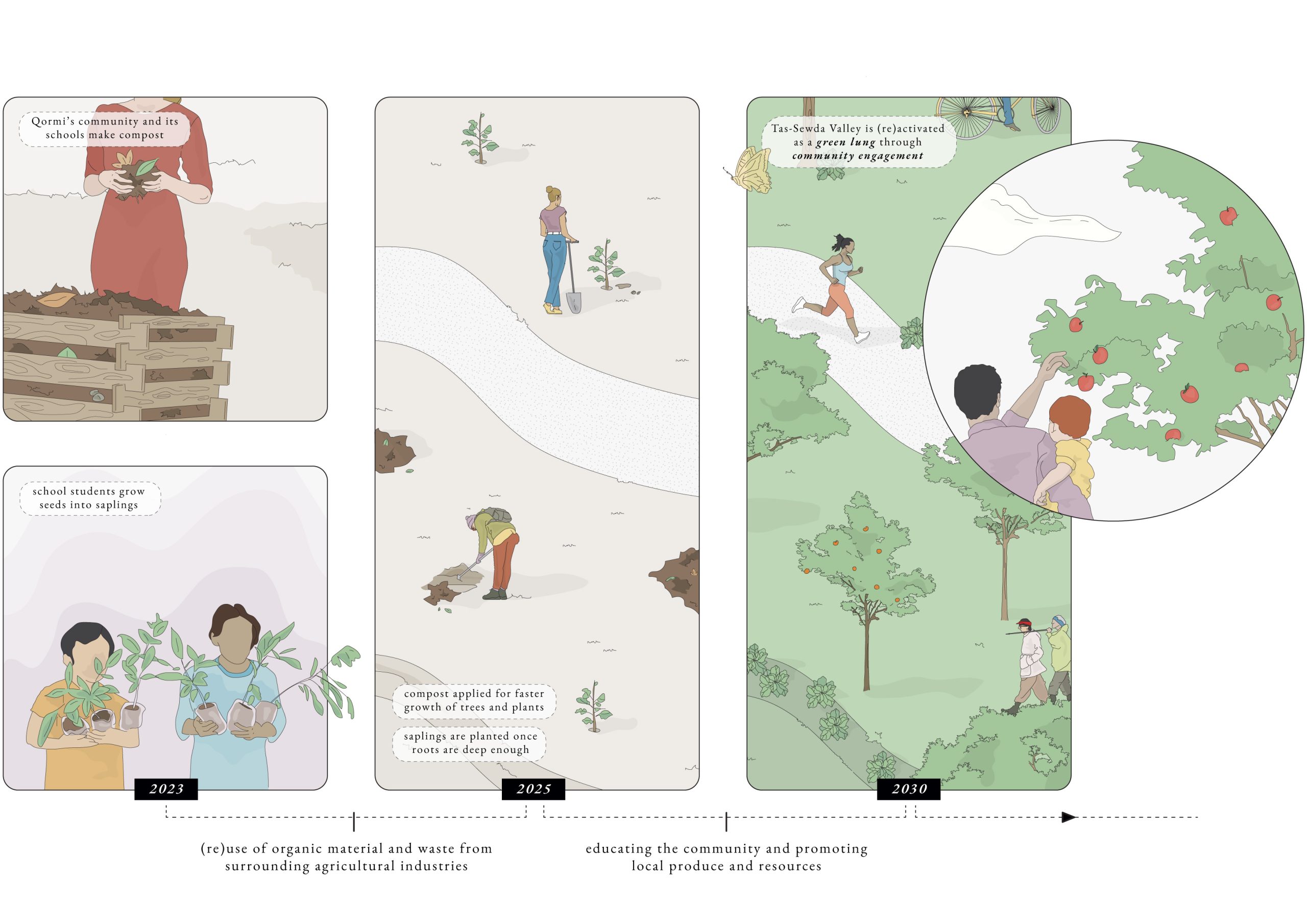
The proposal envisages the (re)use of organic material and waste from the surrounding agricultural industries, the education of the community and the promotion of local produce and resources as it used to be in the past. Finally, the redirection of the existing watercourse and the absorption and reuse of water would reduce the catastrophic consequences caused by the heavy floods as well as creating a system to retain and reuse water, generating positive societal changes and
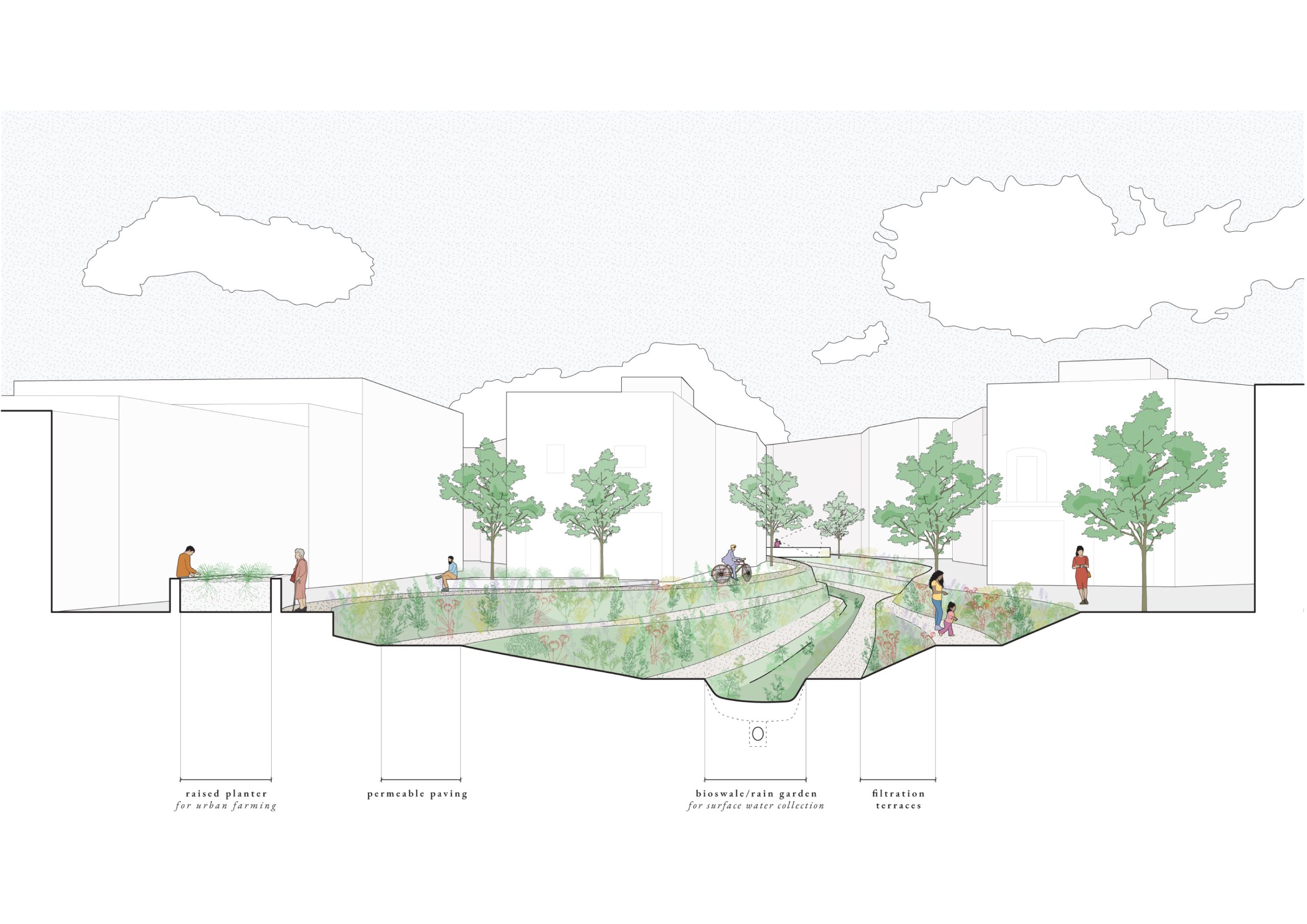
The proposal would therefore restore and re-wild the canal crossing the area, bringing the historical water structure of Qormi back and allowing for the natural flow and
All the proposed solutions are nature-based and inspired by climate adaptation strategies restoring a riparian habitat.
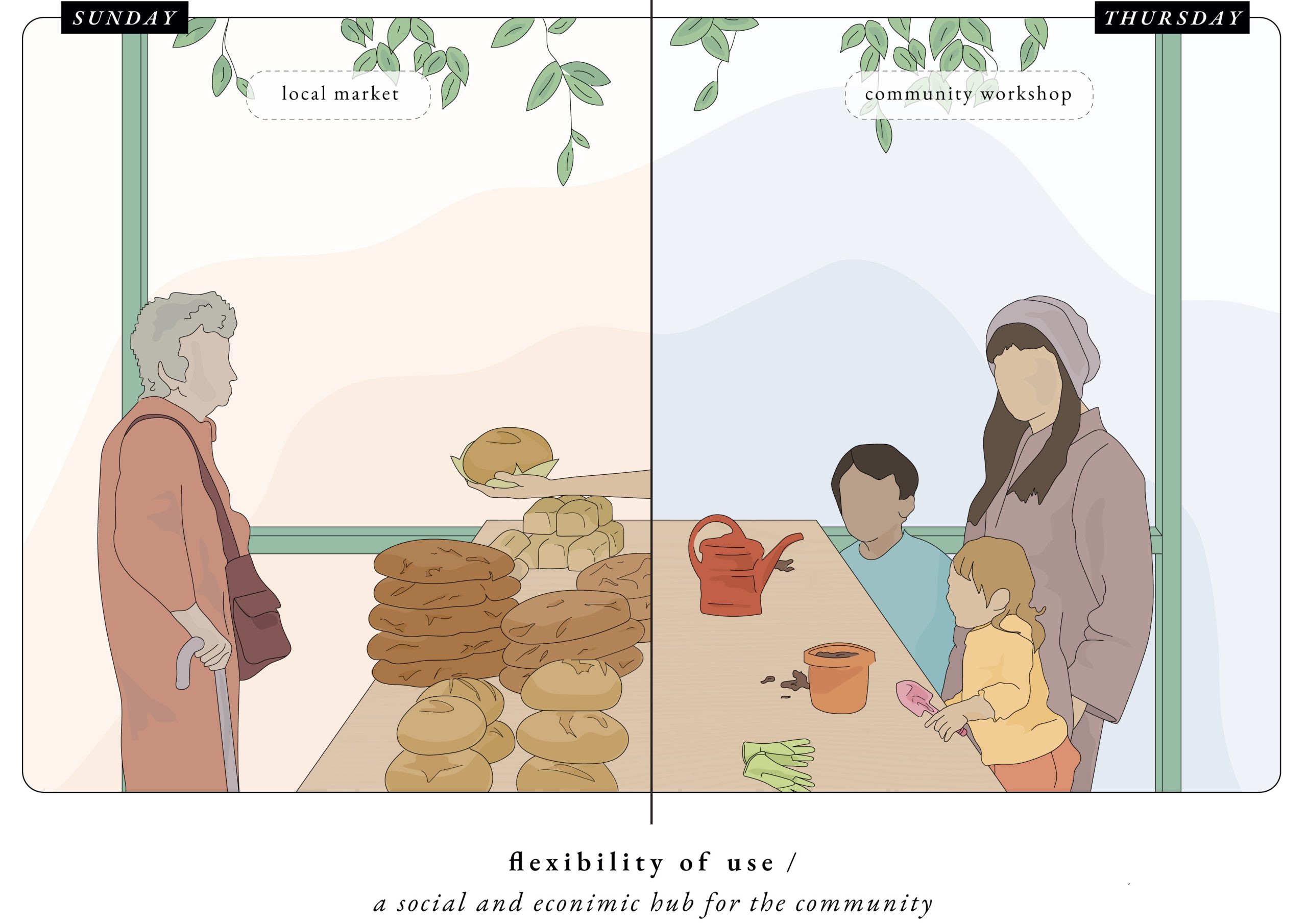
Another important element of the proposal is the attempt at bringing the community together as the active driver of the project and for the change to take place, improving their sense of belonging and attachment towards the historic and cultural heritage. Aside from benefiting from a new public and green space, the community would also be able to contribute to the harvesting of local produce and to other
